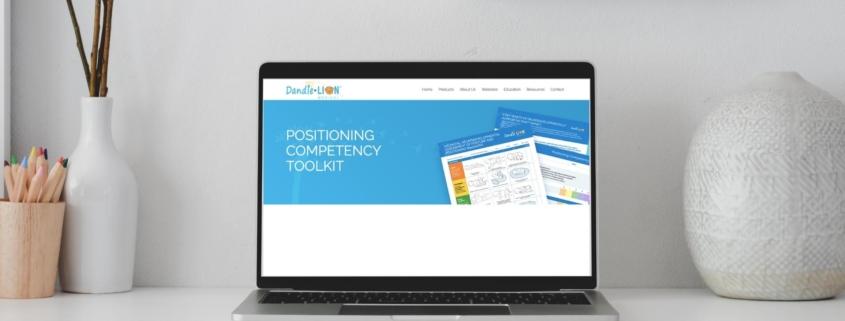Utilizing The Positioning Competency Toolkit
Learn about our latest educational tool for NICU clinicians— The Positioning Competency Toolkit. The Toolkit is grounded in the 5 Tenets of Neurodevelopmentally Supportive Positioning™ and explains how to use each part to achieve better outcomes for premature infants.
What’s Included
The Positioning Competency Toolkit, created by the interdisciplinary Dandle•LION Clinical Education team, is a multimedia resource designed to enhance positioning practice that can be used with any positioning system or device.
The Toolkit was developed to support the standardization of best practices and includes:
- The Positioning Pearls video series, featuring an introductory video that sets the 5 Tenets™ as the foundation for NICU positioning
- A visual overview of the 5 Tenets
- Positioning Competency Tool for clinicians
- Neonatal Neurodevelopmental Assessment of Posture and Positioning (NeoNAPP) tool to evaluate baby’s positioning against our 5 Tenets
Applications of the Positioning Competency Toolkit may include, but are not limited to:
- Unit based clinical orientation
- Clinical skills competency training
- Quality improvement projects designed to improve positioning practices
How To Use The Toolkit
The Positioning Pearls Video Series
There are seven scenario-based positioning videos in the series. Start with Neurodevelopmentally Supportive Positioning, the first video of our Positioning Pearls series, that gives clinicians:
- Familiarity with the 5 Tenets in less than 10 minutes
- Real-world examples of each tenet in the clinical setting
- Just-in-time inservice training prior to using the NeoNAPP
The 5 Key Tenets Overview Document
This overview document outlines the 5 Tenets and explains why they promote the healthy development of the brain and body. By mimicking the womb as much as possible, this approach not only has a substantial impact on the neurodevelopment of preterm infants but also positively impacts the development of future motor milestones.
Positioning Competency Tool
This tool is a pre-and/or post-educational assessment of a caregiver’s skill. It promotes and encourages the proper flow of care and neurodevelopmental integrity by examining the positioning techniques of the assessed clinicians.
The Positioning Competency Tool provides clinicians with:
- 16 care parameters that relate to proper caregiving and positioning before, within, and after the 5 Tenets
- A quantifiable assessment that reflects novice to expert-level proficiency in Neurodevelopmentally Supportive Positioning
- An indication of successful competency in providing the 5 Key Tenets of Neurodevelopmentally Supportive Positioning
NeoNAPP
The Neonatal Neurodevelopmental Assessment of Posture and Positioning (NeoNAPP) is a tool with pictorial examples that are used to assess a baby’s positioning based on the 5 Tenets. Scores on each tenet can range from 0 (absence of the tenet) to 2 (successful attainment of the tenet).
Clinical implications for the total score are listed at the bottom of the tool:
- < 7 points – Needs Improvement: Increase positional support
- 7–9 points – Good: Ensure midline alignment, flexion and containment
- 10 points – Optimal: Maintain and document position
Why Is The Toolkit Important?
Neurodevelopmentally supportive positioning promotes both neuroprotective age-appropriate developmental care and trauma-informed care. It positively influences physiologic function and stability, sensory development, neurobehavioral organization, skin integrity, thermoregulation, bone density, and sleep, optimizing growth, brain development, and neonatal developmental outcomes. In alignment with work by the National Association of Neonatal Therapists and National Association of Neonatal Nurses, DandleLION Medical has created the 5 Key Tenets of Neurodevelopmentally Supportive Positioning. The 5 Tenets can be viewed as the gold standard for positioning – flexion, midline alignment, containment, 360 degrees of proprioception, and free movement with recoil.
Educational & Consultation Resources
- Download the Dandle•LION Positioning Competency Toolkit
- Watch our Positioning Pearls video series
- Set up a consultation with Dandle•LION Director of Education, Alex Luton MN, BS, RN
- Check out our Education Page
- Attend Dandle•LION Clinician Office Hours
- 4th Thursday of the month 9:00 am PST/12:00 pm EST with Elizabeth Jeanson PT, DPT, CNT, NTMTC, DCS


